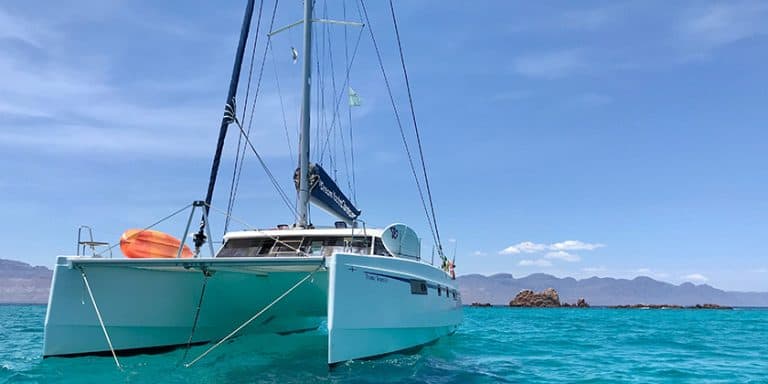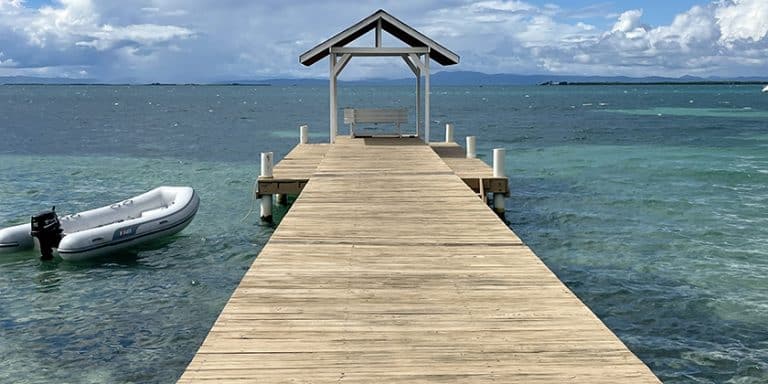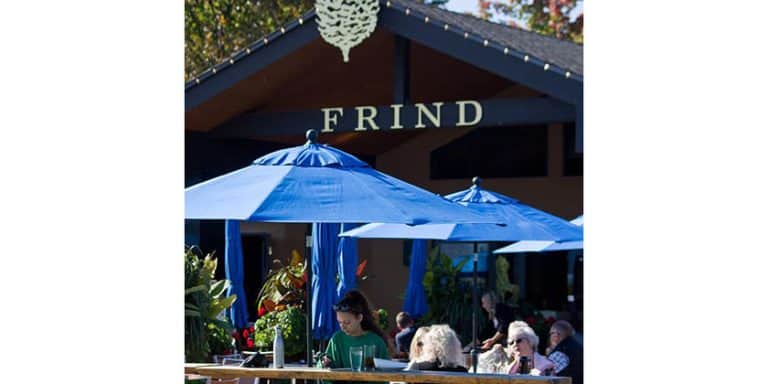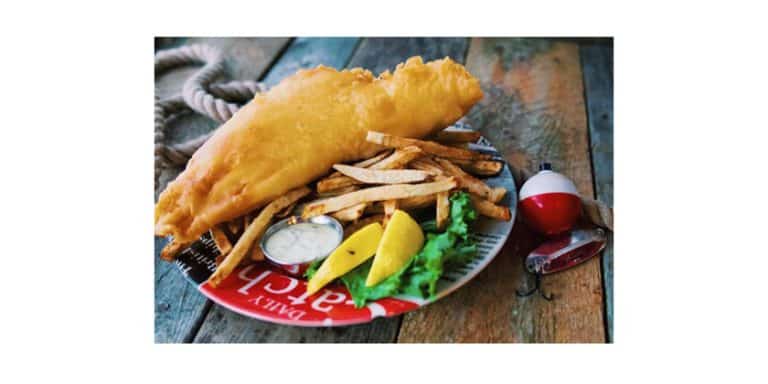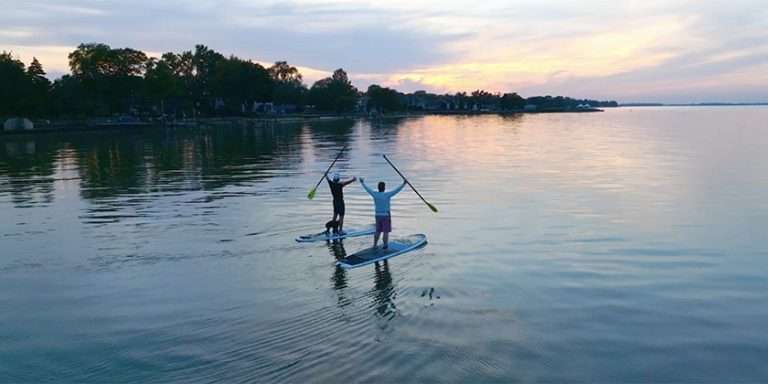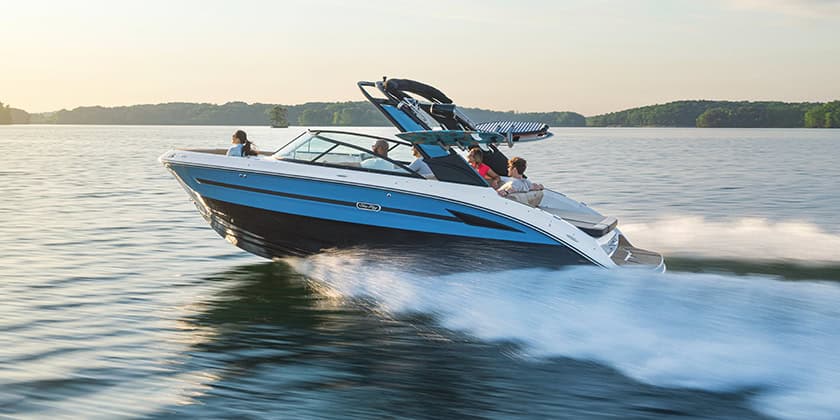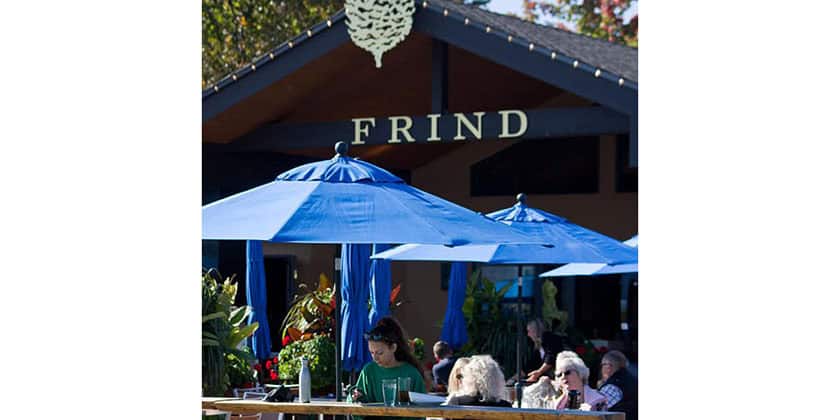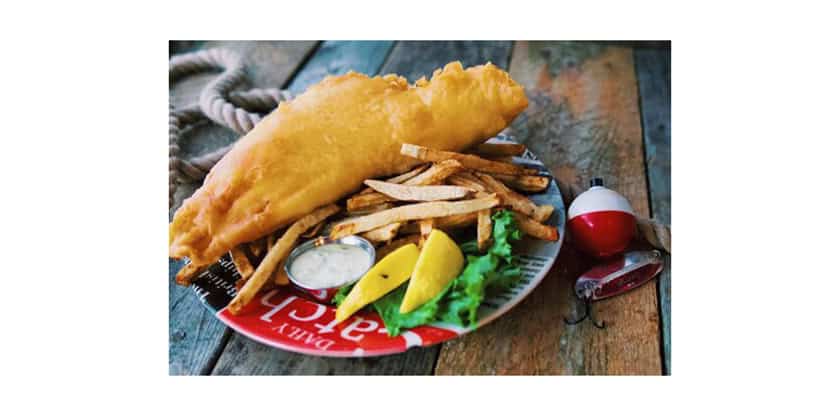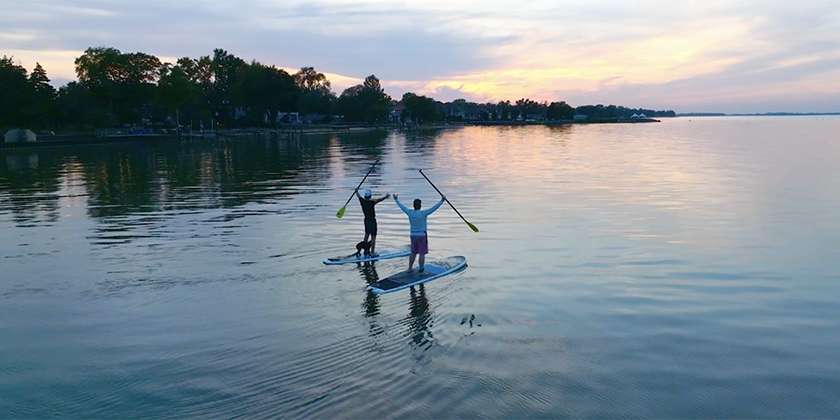Southern Comfort
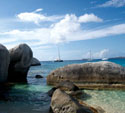
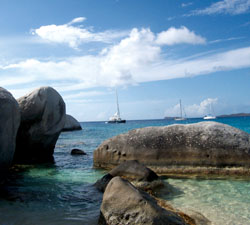 I awake from a deep sleep with a warm breeze blowing softly through the hatch and Annie’s Toy, a Lagoon 380, rocking gently at anchor. Brilliant stars provide the only light in the pitch-black cabin. Aside from the water softly rippling against the hull, not a sound is heard. It’s our first night of a seven-day charter in the British Virgin Islands (BVI) and we share our secluded anchorage with just two other boats. My hometown seems a planet away and I fall asleep eagerly wondering what adventures tomorrow will bring.
I awake from a deep sleep with a warm breeze blowing softly through the hatch and Annie’s Toy, a Lagoon 380, rocking gently at anchor. Brilliant stars provide the only light in the pitch-black cabin. Aside from the water softly rippling against the hull, not a sound is heard. It’s our first night of a seven-day charter in the British Virgin Islands (BVI) and we share our secluded anchorage with just two other boats. My hometown seems a planet away and I fall asleep eagerly wondering what adventures tomorrow will bring.
Fast rewind to a cold, snowy Sunday in January. I’m lying on the couch catching up on my magazine reading. An article on planning a dream cruise in Canadian Yachting, written by our friends Paul and Sheryl Shard, international sailors and award-winning filmmakers, mentions chartering a boat in the Caribbean to get a taste of the cruising life.
“What do you think about taking a sailing vacation someplace warm this winter?” I brightly pose this question to Steve, my husband and business partner. While any excuse to escape winter is met with enthusiasm, there were some obstacles. We are freshwater boaters and, though we both had some saltwater experience decades ago, contending with tides, coral reefs and tradewinds were outside our comfort zone.
“We’re snowed in here today,” reads my email to the Shards. “What about meeting for lunch this Sunday to discuss going on a charter together.” The Shards were raring to go, especially when we suggested chartering a catamaran. Being all diehard monohull sailors none of us had ever sailed a cat. A few more lunches together spent thumbing through cruise guides, filling out forms and provisioning lists while the snow flew outside put us all in place for our charter. So began the countdown to our arrival at the charter base of The Catamaran Company (catamarans.com) in Nanny Cay (pronounced “key”), Tortola, British Virgin Islands.
When taking a bareboat charter without a captain, you are asked to complete an application to determine your sailing expertise and that of your crew. If you’re unfamiliar with the area, hiring a skipper for the first few days is always a good idea. In the last 20 years, the Shards have sailed to 40 countries, logging more than 45,000 miles as they film their travel TV show, “Distant Shores.” As we were first-time charters and saltwater neophytes, they qualified as our “party” leaders.
Located 60 miles east of Puerto Rico, in the Caribbean Sea, the British Virgin Islands is a dependent territory of the U.K., and comprised of more than 60 semi-tropical islands, some of which are uninhabited. Islands surround the Sir Francis Drake Channel, a protected body of water ideal for sailing and anchoring. The BVI are often referred to as the sailing capital of the Caribbean and have the deserved reputation as one of the Caribbean’s safest chartering destinations. Line-of-sight navigation, gentle breezes, scarce tides and deep water harbours within a short day sail of each other combine to make BVI a beginner’s entry to island sailing.
After a thorough briefing from the Catamaran Company rep, who showed us the ropes of multihull sailing and happily shared some of his personal favorite anchorages and can’t miss snorkel sites, we cast off for a week of fun and adventure. We motor out into the Sir Francis Drake Channel and when well clear of the buoyed channel leading from Nanny Cay, raise sails and point the bow to our lunch stop.
After lowering the anchor near shore in Key Cay on Peter Island, we don our bathing suits and snorkle gear and jump in. Within minutes we spot a sea turtle and baracuda. We leave this anchorage in time to arrive at Great Harbor before sunset, where we share a selected anchorage on the north side of Peter Island with three other boats. Night sailing is not permitted in BVI. All boats require a National Parks Trust permit (we paid US$25 for one week). Throughout BVI are mooring fields managed by the National Parks. If you plan to use a mooring ball there is an overnight fee, usually US$25. A charitable donation to VISAR, a search and rescue organization made up of volunteers, costs US$2 per person.
In the early afternoon on our second day, we’re tacking up the Sir Francis Drake Channel on a close reach in 16-knot easterly winds. Sailing the cat is exhilarating. It powers through the slight chop and the autopilot guides us through the wind shifts. A water taxi passes close and a crewmember shouts, “You’re taking water on, mon!” We panic and three of us immediately dive for the bilges, which are bone dry. As our worries ease and heart rates return to normal, we laughingly realize that it must be Caribbean-speak for “you’re smoking fast!”
On the ferry ride to Tortola, I chatted with a fellow passenger who volunteered some tips on catamaran sailing. “They can’t tack and they don’t sail upwind,” I was told. Our first impression was that being on a catamaran was like sailing a hotel suite but any misgivings were erased during this run. The cat is a dry, stable platform that sails fast and flat. Leave a glass on the cockpit table and it doesn’t tip over while sailing. The low-aspect rig and small headsail make for effortless sail handling and you won’t stall the counter-balanced rudders when you ease the wheel over and falling a few degrees to enable the boat to gain momentum for perfect tacks. As for upwind performance, a catamaran points slightly lower than a monohull but its supreme speed ensures you’re first to arrive at the anchorage.
We start the engines and pick up a mooring ball in Long Bay in the shadow of the mountains of Virgin Gorda. Twin engines simplify close-quarters maneuvering of this 38’ (11.5m) catamaran but steering with engines only takes some practice.
As the sun sets, we go for a quick swim, stow our gear and begin dinner preparations. Tonight’s meal is a five-star feast: chicken cacciatore, garlic potatoes, mixed vegetable salad and coconut cake for desert. The Catamaran Company offers different provisioning packages and its helpful staff gladly provides advice on meal planning. Choose from three meals a day or partial provisioning, which gives you a chance to dine ashore, or select items from a long shopping list. We opted for the latter, choosing mostly staples and beverages from the multi-page single item provisioning form. This gave us the flexibility to purchase supplies locally or to sample the local fare.
As Steve works his magic in the galley, Sheryl and I retreat to the cockpit with paperbacks and Paul switches on his computer to check emails and plan tomorrow’s cruise. The Lagoon 380’s accommodation plan is immense compared to a monohull of similar length and ideal for two or three couples. With two couples onboard, each has their own “hull” with a luxurious cabin, double bed, shower and head, so privacy was never an issue. The galley is on the same level as the bridgedeck and creates a living, cooking and dining area that becomes an extension of the cockpit. The boat comes well stocked with quality linens and plush towels. As we arrived the day before the charter began, we choose the sleep aboard option and were greeted with a welcome basket filled with complimentary snacks and beverages including a bottle of Pusser’s Rum. A large refrigerator and separate, cockpit-mounted freezer, requires running the engines three hours daily to charge the 800-amp battery bank.
That night, we stretch out on the trampoline and gaze at the spectacular star show above. We’re on “island” time now, having succumbed to pure Caribbean-style relaxation.
The next morning I don a bathing suit and spend the early hours snorkeling on the shallow-water reef. With the sun still low in the sky, the vivid colours of the coral are in sharp contrast to its multi-coloured inhabitants. Back on deck, a rainbow trails a passing shower as we stow our gear and prepare the boat for the 16-mile passage to Anegada. This trip will take us outside the protected island chain and into the Caribbean Sea.
In contrast to the high volcanic islands bordering the Sir Frances Drake Channel, Anegada is a low-lying coral atoll bordered by treacherous barrier reefs and miles of pristine white sand beaches. Boasting the world’s third largest barrier reef, the island is barely visible from the sea and demands a careful approach. Our GPS course bearing is 19 degrees so Paul sets the autopilot at 26 degrees to allow for current and to ensure we arrive well west of the reef that extends 10 miles south. We sail the trip in two hours, timing our arrival at noon to easily spot the reefs flanking the entrance when the sun is directly overhead. The island was once off limits to charterers and now with GPS navigation and the addition of mooring balls in the harbor is becoming a popular destination.
The island’s isolation is perfect for those seeking solitude. Here all roads are dirt, goats and cows roam freely and there are few services. A call to the Anegada Reef Hotel on the VHF radio reserves a table and our fresh fish choices for a candlelight dinner on the beach. If you’re after a close encounter of the aquatic kind, a Jitney ride to the reefs on the north shore boasts the finest though somewhat challenging snorkeling due to the strong currents.
No visit to BVI is complete without a trip to the Baths on Virgin Gorda, the third largest island in BVI. Our destination is Leverick Bay, a popular anchorage in North Sound, where we’ve been told we must arrive by noon to get a mooring ball. Being on a catamaran, we’re in no rush to leave Anegada so we lollygag through a late breakfast, departing mid-morning. A few hours later, we pick up a ball in the mooring field close to the dinghy dock. The striking advantage of a catamaran’s speed is that you can enjoy another cup of coffee and still arrive at your next mooring, drop the anchor, have a swim and be enjoying cocktails before the early risers in monohulls arrive.
The Baths are BVI’s best-known attraction. Enormous boulders shaped during a volcanic upheaval 70 million years ago form light-filled grottoes and shallow pools that flood with seawater. The Catamaran Company rep suggested that we visit the Baths from land rather than contend with the overcrowded anchorage. With the boat tied to a secure mooring we load the dinghy and head ashore to rent a car for the road trip.
Virgin Gorda’s corkscrew roads branch out in many directions making navigation difficult. If the drama of the ride isn’t astounding enough, the vistas overlooking Gorda Sound are. Luckily, we arrive at the Baths as the tours are leaving and hike and explore the labyrinthine passageways and caves then cool off in the warm, tropical water. Dinghies are not permitted to land on the beaches at the Baths so if you arrive by boat, you must swim ashore. Steve cleverly packed our GPS so we simply followed our track back to the boat.
One day in civilization and we’re eager to depart. A day sail brings us to Sandy Cay in Manchioneel Bay, east of Little Jost Van Dyke. On this passage, the light winds are on our stern quarter so we rig a boom preventer and a barber haul line to pull out the jib foot and sail the 22.8-mile passage in 4 hours, 22 minutes. Approaching the busy anchorage under power, we drop the anchor about 100’ (13m) from shore. A welcome seclusion from the bustle of Virgin Gorda, this tiny, low-lying white sand spit dotted with palm trees protects the anchorage in calm winds. The waters are alive with marine life and I spend the afternoon hovering above the shallow reefs, swimming with vast schools of fish, while brown boobies, shearwaters and pelicans circle overhead and repeatedly plunge into the water.
When you take a bareboat charter, the boat is your responsibility and, just like your house, it requires your vigilance. Be on the lookout for wear items. Before leaving Anegada, Paul discovered a nut and washer lying on deck, which after careful inspection, we found belonged to the boom gooseneck pin. The boom could have easily dropped on deck when next hoisting the mainsail. You are also liable for the loss or theft of the dinghy and outboard and for any damage. Optional non-refundable dinghy insurance is a wise investment and affordable at just US$10 per day.
Sadly, it’s our last day in BVI and rain brings welcome relief from our sun-baked bodies. With 18 knots of wind on the beam, the speedo tops 10 knots and we’re “smoking” through the Sir Frances Drake Channel on our way to Nanny Cay. We cross tacks with a monohull who soon falls behind our wake. It’s a fitting end to our week of BVI heaven.

